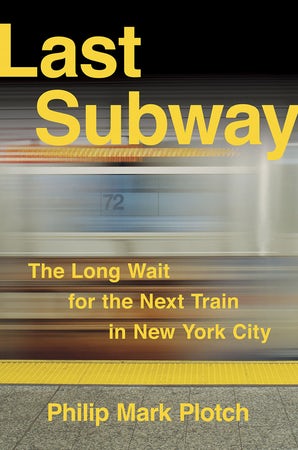
Earlier this year, Phil Plotch, a one-time transit planner who is now a professor of political science at Saint Peter’s University in New Jersey, published the definitive account of the Second Ave. Subway. The book is called The Last Subway: The Long Wait for the Next Train in New York City, and it traces the tortured political history of the Second Ave. Subway and its various trials and travails. I’ve wanted to talk with Phil about his book and the Second Ave. Subway and finally had the chance to sit down with him this week.
In the latest episode of my podcast, Phil and I discussed the sagas of the Second Ave. Subway, from its often-delayed origins in the early 20th century to its role in pushing the formation of the MTA to the Gov. Cuomo-inspired rush to completion. Is the three-stop extension of the Q train that made up Phase 1 of the project really New York City’s last subway? You’ll have to listen to find out.
As always, you can find this episode at all the popular podcast spots — iTunes, Google Play, Spotify or Pocket Casts, to name a few. Or you can listen by clicking the “play” button below. If you like what you hear and have been enjoying the podcasts, please consider leaving a review on your iTunes.
Thanks for listening, and a big thank you as well to Joe Jakubowski for sound engineering. The podcasts are great fun, but they take a lot of time and effort. I can keep doing them only through the generous contributions of my listeners so please consider joining the Second Ave. Sagas Patreon. Since this site runs entirely on Patreon contributions, your help keeps the proverbial engine going. You can find a copy of Last Subway online or at your local bookstore.

2 comments
Second Ave Subway.
Rather than a multi-billion dollar project that only runs 3 stops at a time of MTA dire financial distress, light rail and/or express buses. Faster to implement, cheaper, not same environmental impact and neighborhood disruption, easier and cheaper for accessibility for people w. disabilities, no multi-million dollar elevators needed ..Models in Europe and even our neighbor in New Jersey. Money foolishly already going into preparation
Worked in East Harlem , no no no
In 2020, under the MTA $51 billion Capital Plan, the overall cost of Phase 2 went up close to $1 billion. This raised the price tag to $6.9 billion. The previous federal share of $2 billion or 33% is now assumed to be 50% or $3 billion plus. Who can guarantee (based upon future advancement of design and engineering, procurement process for contract(s) followed by change orders during construction due to unforeseen site conditions or changes in scope) that the final cost could end up a billion or two more.
A legal commitment from Washington for funding is still unknown. It could take several more years to resolve. FTA has only provided the MTA in 2018 was the FONSI (Finding of No Significant Impact) based upon completion of the NEPA (National Environmental Protection Act) review process. The project still faces many hurdles.
Current status for funding sources necessary to support the MTA $51 billion 2020 – 2024 Five Year Capital Plan is fragile. The MTA continues to have placed this program on hold for months due to the unresolved Corona Virus financial impacts. This unanticipated crises has impacted funding sources. Due to the economic recession as a result of Covid-19, billions anticipated from congestion pricing, real estate transfer, internet sales, along with other city and state taxes, may not appear. Don’t be surprised when Phase 2 construction is postponed to the next 2025 -2029 Five Year Capital Plan.
(Larry Penner is a transportation advocate, historian and writer who previously worked for the Federal Transit Administration Region 2 New York Office. This included the development, review, approval and oversight for billions in capital projects and programs for the MTA, NYC DOT, NJ Transit along with 30 other transit agencies in NY & NJ) Don’t be surprised when Phase 2 construction is postponed to the next 2025 -2029 Five Year Capital Plan.